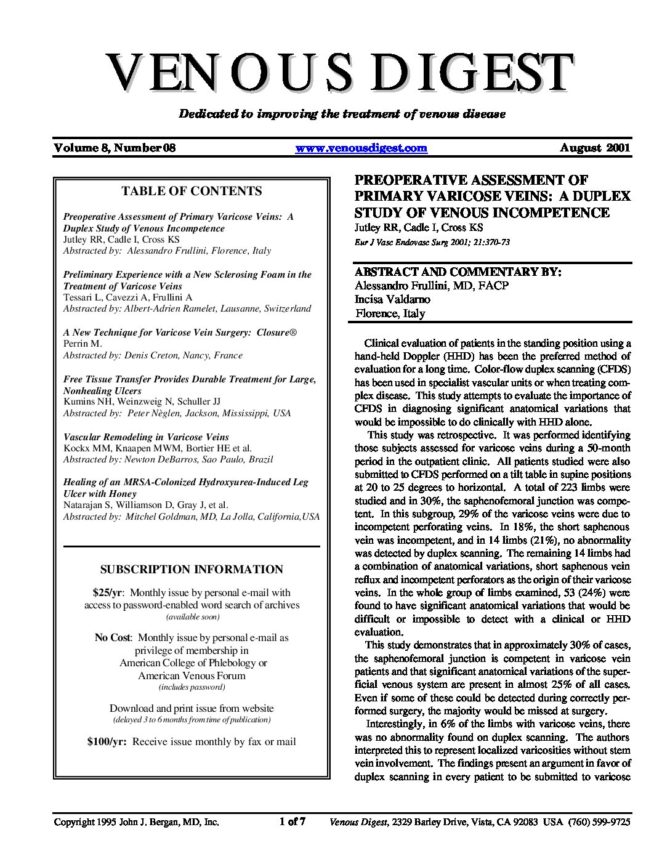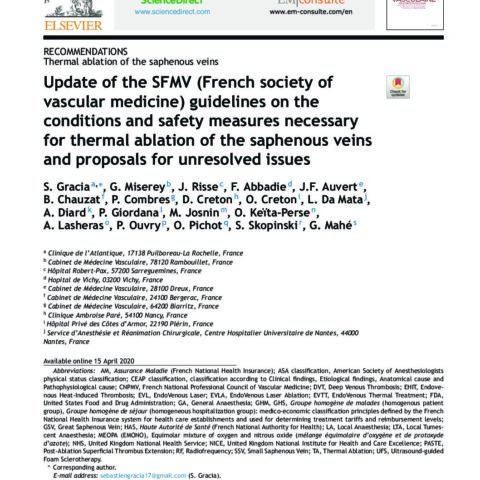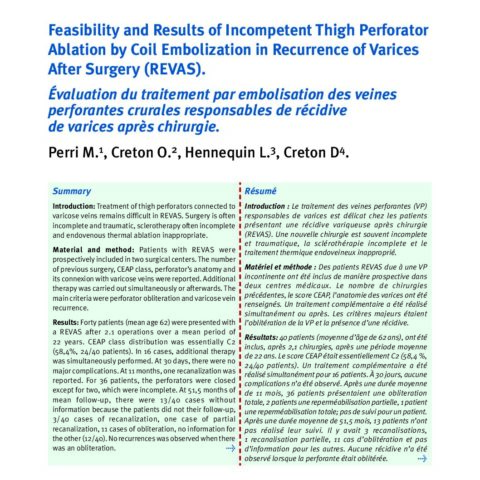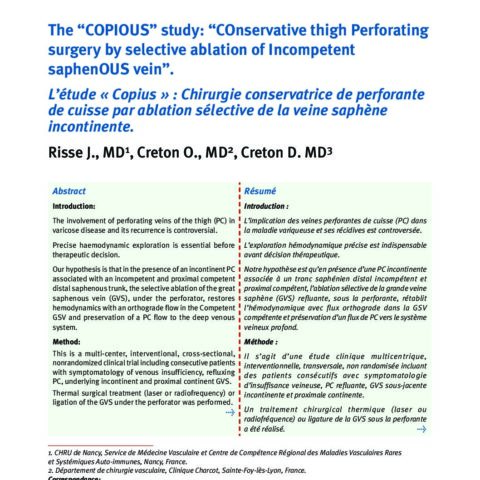A new technique for varicose vein surgery: Closure®

A new technique for varicose vein surgery: Closure®
The author has done a comprehensive compilation of different types of saphenous vein surgery separating surgical techniques into two groups: Excisional and conservative (for the main saphenous trunk). Both have been tremendously improved in the last decade by large-scale use of the preoperative Duplex scan. Although surgery in treating varicose veins has been validated as an effective procedure, the results provided by so-called conservative surgery have not been compared in prospective and randomized studies. The author includes the new Closure® technique in the excisional surgery group and compares the short-term outcome of Closure® with excisional surgery which is largely responsible for postoperative pain and hematoma and may require two weeks of sick leave. Closure® is a new endovascular procedure using radiofrequency energy to close the pathological vein. The catheter is introduced into the saphenous trunk distal to the refluxing portion with a percutaneous introducer or directly via a phlebotomy. The tip of the catheter is positioned at the saphenofemoral junction with the help of echographic scanning. After applying an Esmarch bandage and with manual compression on the upper portion of the thigh, the electrodes are opened. The catheter is then slowly withdrawn at a speed of 2 to 3 cm per minute. In order to maintain a temperature of 85°C, a thermocouple measures the temperature, and impedance assures the accurate delivery of energy. Heating produces collagenous retraction, fibrosis of the vein wall, and occlusion of the treated vein.
The first clinical outcomes were presented at the Inaugural Congress of the European Venous Forum. A total of 252 cases were enrolled. The average diameter of the great saphenous trunk was 7.4 mm. Complications included superficial venous thrombosis (1.7%), deep venous thrombosis (0.3%), transitory paresthesia (9.8%), and skin burning (2%). In 88% of cases, return of normal activity was obtained in less than seven days. Quality of life score was improved within six weeks and was maintained at 12 months. Color-flow duplex scanning showed occlusion of the saphenous trunk in 90% of cases followed up after one year.
COMMENTARY
All surgical techniques should be separated into 3 types :
- Excisional technique (including Closure®): Must conform accurately to hemodynamic abnormalities and varicose network. The objective is the suppression of varices and abnormal refluxing portion of the trunks and tributaries.
- Conservative techniques which involve ligatures to suppress reflux leads to improvement in symptoms and stabilization of the condition.
- Restorative techniques: Aims to restore competence and patency of the subterminal saphenous valve (external banding and VNUS Restore® hold out a promise of good results).
These different techniques should be frequently combined, especially to include phlebectomies which must always be performed to remove the varicose veins. Closure® is a good technique if used for the right indications which include proximal valve insufficiency, incompetence of the saphenous trunk between the groin and the knee, isolated incompetent saphenous trunk fed by peroneal veins or thigh perforators, and residual refluxing saphenous trunk in the thigh within the scope of recurrent varicose vein surgery. Closure® is not recommended for the short saphenous trunk or the greater saphenous vein in the calf because of a high risk of paresthesia. When the trunk is close to the skin, it can be separated from the skin by dilute local anesthesia to prevent skin burning. In these cases, a particularly reduced short-term postoperative convalescence and improvement in quality of life after one year of followup have been demonstrated.
One interesting question is the future of the residual, previously incompetent saphenofemoral junction after removal of only the trunk. The hemodynamic outcome of a large multicenter series after a two-year followup is encouraging. In the absence of a refluxing tributary in the upper portion of the thigh connected to the saphenofemoral junction, the epigastric and pudendal veins remain drained normally into the femoral vein. This fact may show that the flush ligation is not the most important part of the stripping. Phlebectomy and removal of the saphenous trunk likely play an important role in good results. A response to the question explaining the success of isolated extensive phlebectomies may be found!
| Date | 2000 |
| Auteurs | Angéiologie 2000; 52:23-8 Perrin M. ABSTRACT AND COMMENTARY BY: Denis Creton, MD, EC.AP, Nancy, France |






